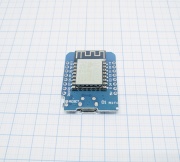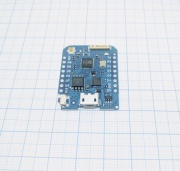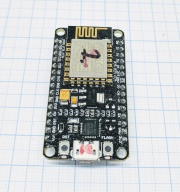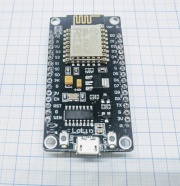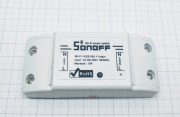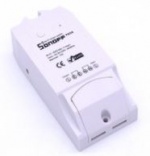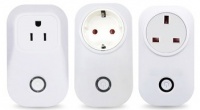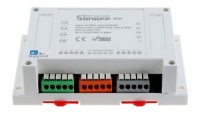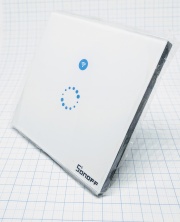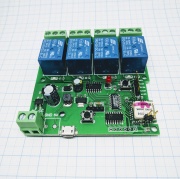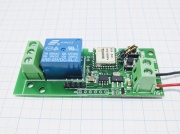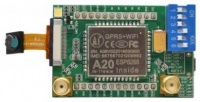Difference between revisions of "ESP Hardware"
Grovkillen (talk | contribs) m |
Grovkillen (talk | contribs) m |
||
| Line 77: | Line 77: | ||
| [[File:Sonoff_Basic.jpg|thumb|upright=0.6|center|link=Sonoff basic| [[Sonoff basic]] ]] | | [[File:Sonoff_Basic.jpg|thumb|upright=0.6|center|link=Sonoff basic| [[Sonoff basic]] ]] | ||
| − | | generic ESP8266 | + | | generic ESP8266 <span style="color:red">or ESP8285</span> |
| 1MB | | 1MB | ||
| None | | None | ||
| Line 90: | Line 90: | ||
| [[Sonoff TH10_TH16 | Sonoff TH10/TH16]] | | [[Sonoff TH10_TH16 | Sonoff TH10/TH16]] | ||
[[File:Sonoff_th.jpg|200px|150px|link=Sonoff TH10_TH16]] | [[File:Sonoff_th.jpg|200px|150px|link=Sonoff TH10_TH16]] | ||
| − | | generic ESP8266 | + | | generic ESP8266 <span style="color:red">or ESP8285</span> |
| 1MB | | 1MB | ||
| None | | None | ||
| Line 103: | Line 103: | ||
| [[Sonoff S20]] | | [[Sonoff S20]] | ||
[[File:Sonoff_S20.jpg|200px|link=Sonoff S20]] | [[File:Sonoff_S20.jpg|200px|link=Sonoff S20]] | ||
| − | | generic ESP8266 | + | | generic ESP8266 <span style="color:red">or ESP8285</span> |
| 1MB | | 1MB | ||
| None | | None | ||
Revision as of 23:10, 2 December 2017
This is a (not yet complete) list of Hardware which is known to be supported:
| Device Name | ESP Chip | Flash Size | USB-TTL | GPIOs available (red=not recommended use due to possible problems) |
GPIO connected to onboard Hardware | onboard PSU/voltage regulator | Input voltage | Antenna | Size (LxWxH) |
|---|---|---|---|---|---|---|---|---|---|
| 12 E/F | 4MB | CH340 | 0, 1, 2, 3, 4, 5, 9, 12, 13, 14, 15, 16, A0 (with Voltage divider) | 1&3 (serial) | RT9013 | 5 VDC (+/-0,5V) | onboard PCB | 34.2mm x 25.6mm x ?mm | |
| 12 E/F | 16MB | CP2104 | 0, 1, 2, 3, 4, 5, 9, 12, 13, 14, 15, 16, A0 (with Voltage divider) | 1&3 (serial) | RT9013 | 5 VDC (+/-0,5V) | onboard ceramic/pigtail connector | 34.2mm x 25.6mm x ?mm | |
| WeMos D1 R2 | 12 E/F | 4MB | CP340G | 0, 1, 2, 3, 4, 5, 9, 12, 13, 14, 15, 16, A0 (with Voltage divider) | 1&3 (serial) | 9-24VDC Switching power supply to 5 VDC(@1A) and RT9013 | 9-24VDC (power jack), 5VDC (5V pin) | onboard PCB | 68.6mm x 53.4mm x ?mm (=Arduino UNO) |
| 12 E | 4MB | CP2102 | 0, 1, 2, 3, 4, 5, 9, 12, 13, 14, 15, 16, A0 (with Voltage divider) | 1&3 (serial) | ? | 5 VDC (+/-0,5V) | onboard PCB | ?mm x ?mm x ?mm | |
| 12 E | 4MB | CP340 | 0, 1, 2, 3, 4, 5, 9, 12, 13, 14, 15, 16, A0 (with Voltage divider) | 1&3 (serial) | ? | 5 VDC (+/-0,5V) | onboard PCB | ?mm x ?mm x ?mm | |
| generic ESP8266 or ESP8285 | 1MB | None | 1, 3, (14) | 0 (button), 12 (Relay 10A@230VAC), 13 (LED) | on board mains AC to 5DVC + ? 3.3V Voltage Regulator Attention! The DC power is NOT galvanically decoupled from AC power! |
90-250VAC | onboard PCB | 88mm x 38mm x 23mm | |
| Sonoff TH10/TH16 | generic ESP8266 or ESP8285 | 1MB | None | 1, 3, (14) | 0 (button), 12 (Relay 10A/16A@230VAC), 13 (LED), 14 (AM2301) | on board mains AC to 5DVC + ? 3.3V Voltage Regulator Attention! The DC power is NOT galvanically decoupled from AC power! |
90-250VAC | onboard PCB | 88mm x 38mm x 23mm |
| Sonoff S20 | generic ESP8266 or ESP8285 | 1MB | None | 1, 3, (14) | 0 (button), 12 (Relay 10A@230VAC), 13 (LED) | on board mains AC to 5DVC + ? 3.3V Voltage Regulator | 90-250VAC | onboard PCB | ? |
| Sonoff 4ch | generic ESP8285 | 1MB | None | 2, (7, 8) | 0, 9, 10, 14 (Buttons), 4 , 5, 12, 15 (Relay 10A@230VAC), 13 (LED blue) | on board mains AC to 5DVC buck converter + 3.3V Voltage Regulator | 90-250VAC | onboard PCB | 145mm x 90mm x 41mm |
| generic ESP8285 | 1MB | None | - | 0 (button), 12 (Relay 2A@230VAC), 13 (LED blue) | on board mains AC to 5DVC buck converter + 3.3V Voltage Regulator | 90-250VAC | onboard PCB | 86mm x 86mm x 37mm (EU) 120mm x 78mm x 41mm (US) | |
| generic ESP8285 | 1MB | None | 0, 9, 10, 14 | 4 , 5, 12, 15 (Relay 10A@230VAC), 13 (LED red) | powered by 7-32V or USB (5V) | 90-250VAC | onboard ceramic | 75mm x 75mm x 18mm | |
| generic ESP8285 | 1MB | None | - | 12 (Relay 10A@230VAC), 13 (LED red) | powered by 5V or USB (5V) | 90-250VAC | onboard ceramic | 30mm x 70mm x 18mm | |
| Ai-Thinker A20 Breakout | generic ESP8285 | 1MB | None | ? | ? | ? | ? | SMA Connector | ? |
Power for your ESP
Power Supplies
Do yourself a big favour: Avoid cheap power supplies!
We have seen some strange behaviour from cheap power supplies. If you put a voltmeter on these it shows the correct voltage. Everything looks nice.
If you use an oscilloscope you may get some nasty surprises. Oscillating voltage, ripples.....
Use a high quality power supply like MeanWell or similiar. It should have at least a current of 1..2 ampere.
USB Cables
If you are using a nodeMCU, a WeMos or another USB-powered module, be aware of using good quality USB cables. Cheab cables use really thin wires. For transfering data and some milliampere of current these are ok. For an ESP module they possibly are too weak. Voltage drops and some warm boot occurs.
As a rule of thumb: Use USB cables as thick and as short as possible. If you receive warm boots for no obvious reason try a capacitor of at least 470µF from 3.3V to ground as near to the module as possible.
A good power supply is recomended anyways as USB power from the computer is always limited. Do not use the micro USB port for anything but flashing and lab tests. Use Vin instead (on WeMos D1 mini the port is simply labeled "5V").
Checking Voltage
If you need to check voltage the first step is a good quality voltmeter or multimeter. Whereever possible put the probes directly on the ESP-pins of the nodeMCU or WeMos module.
Please be aware that a digital voltmeter is slow. The result you see on the display is always an average value. If you really need to know what's going on with your power supply an oscilloscope is necessary as it can cope with short voltage peaks or drops.
